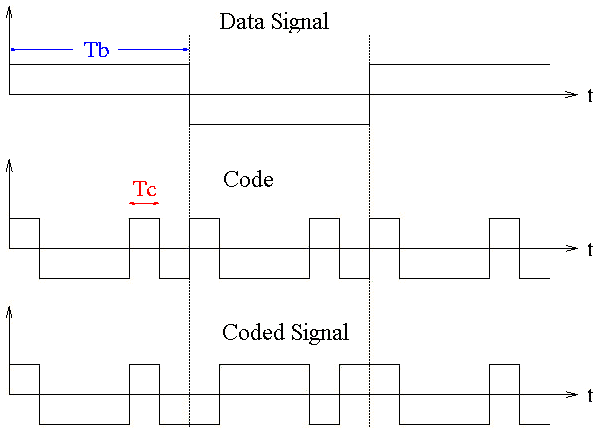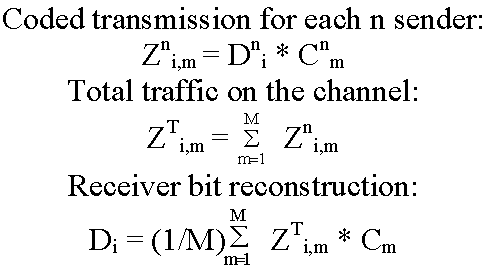
The CDMA Algorithm
The CDMA algorithm requires multiplying the data signal of i bits by a code word of length m. Each data bit in the data signal stream must be multiplied by the entire code word. This process is represented graphically in figure 1.

Figure 1
The total traffic on the channel is simply the sum of all individual coded data streams. A receiver, aware of its particular transmitter's code, may then perfectly reconstruct the original data stream out of the channel traffic. When multiple users require transmission on the same channel, the code word for each user must be orthogonal to all other users' code words. Non-orthogonal codes would render the reconstruction of original data out of the channel traffic impossible. Equations illustrating this algorithm can be found in figure 2. Each Di represents one bit of one user's individual data stream of i bits. Cm is a unique, orthogonal code word of length m. Zn represents one sender's coded signal and ZT shows the total encoded traffic on the channel.

Figure 2